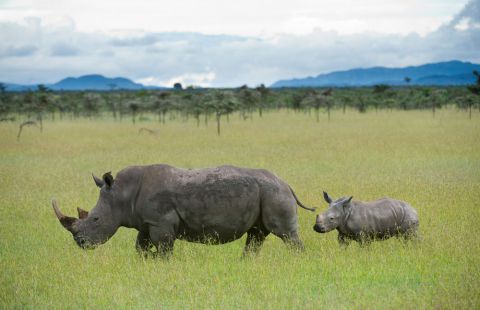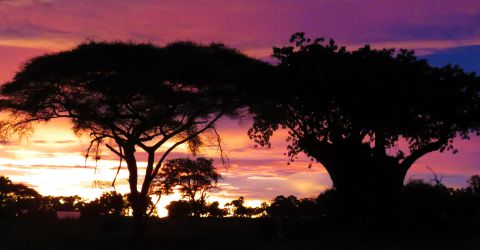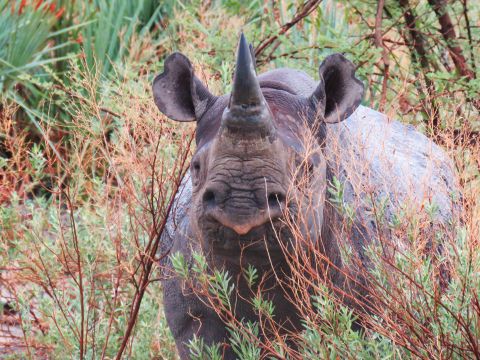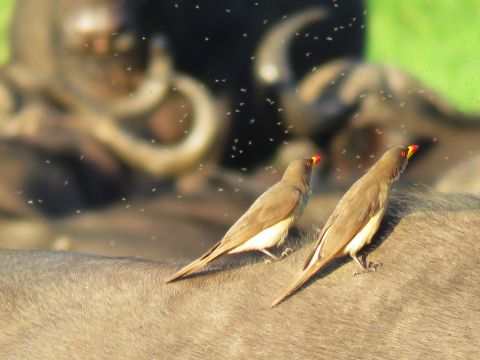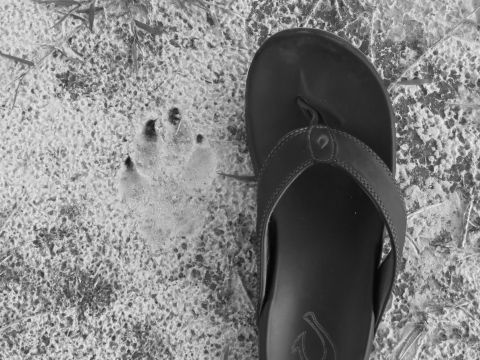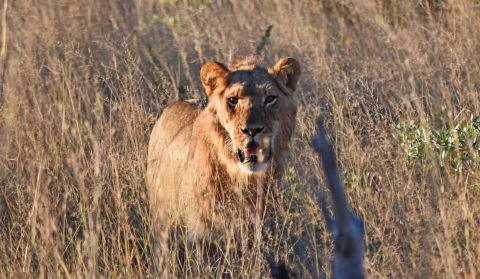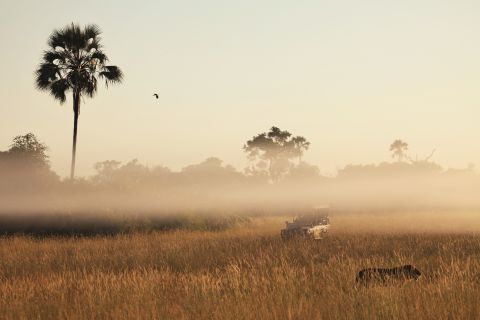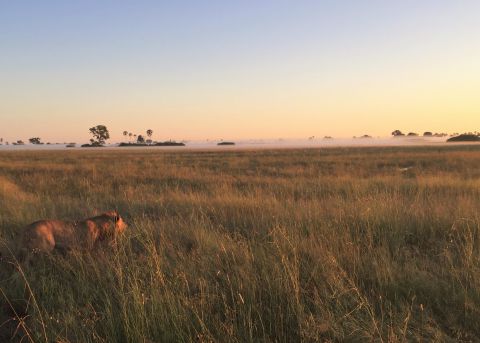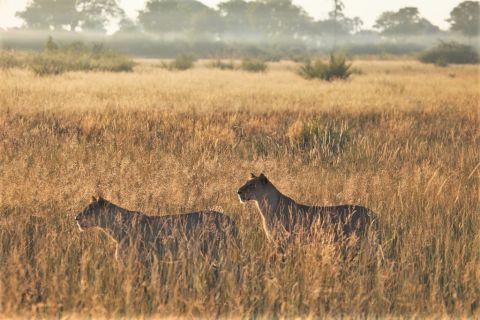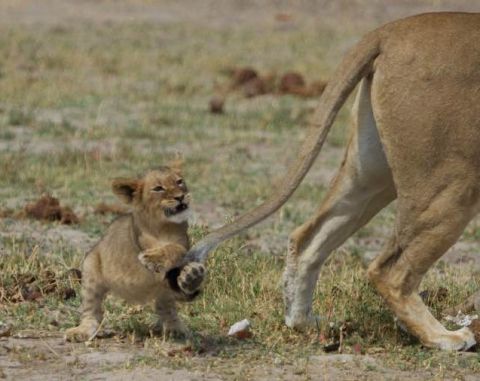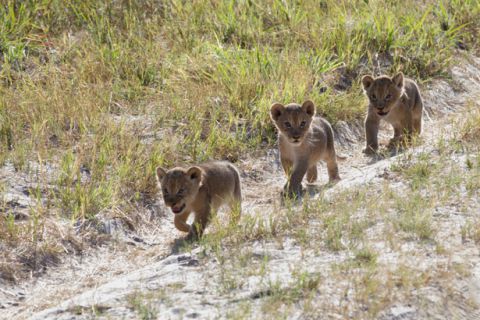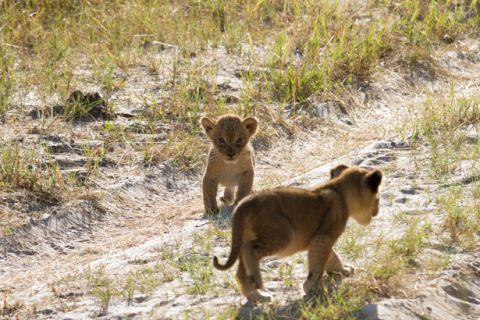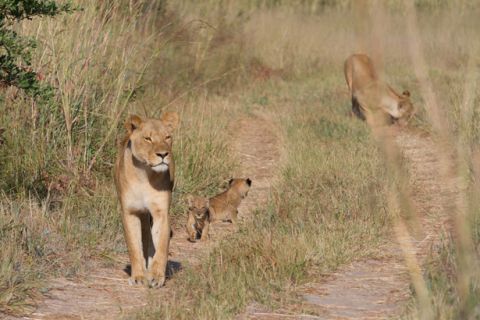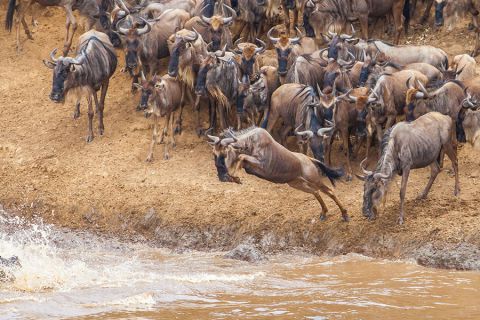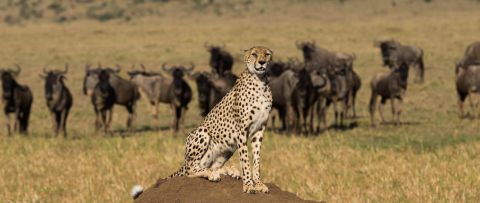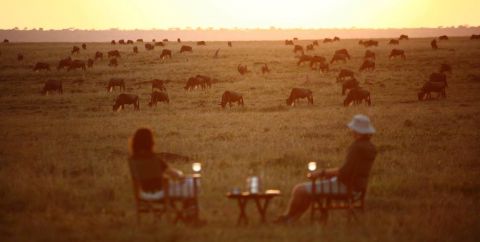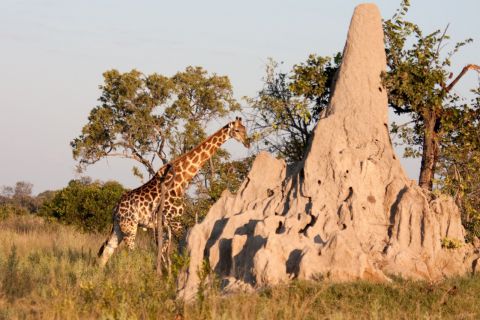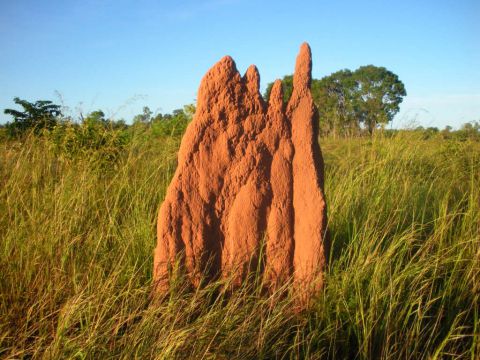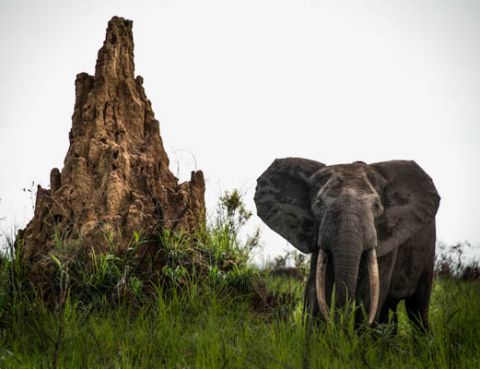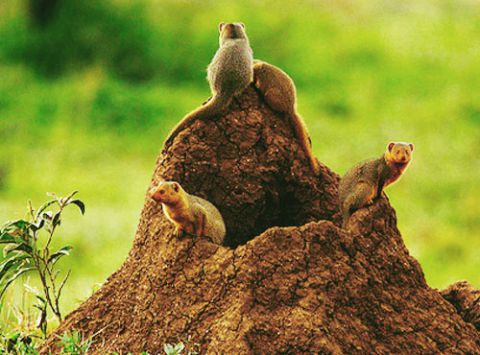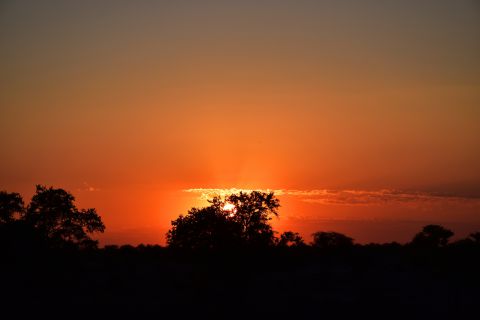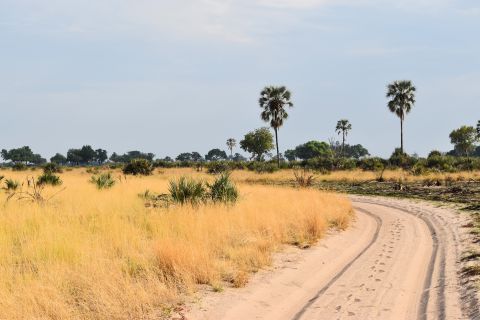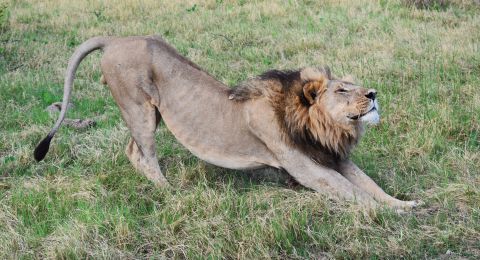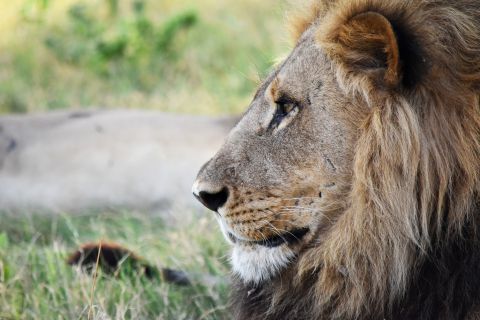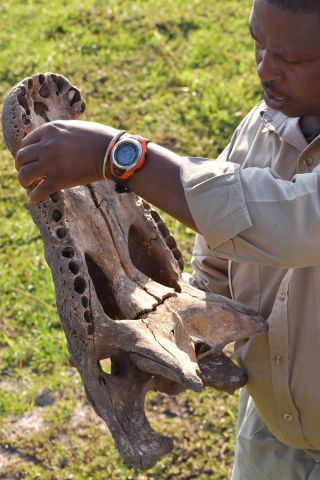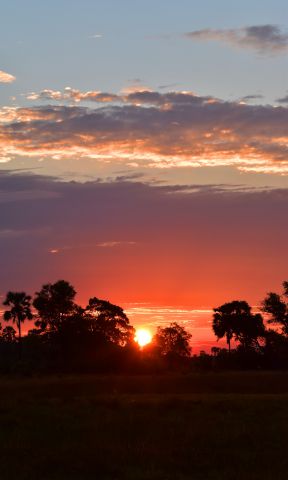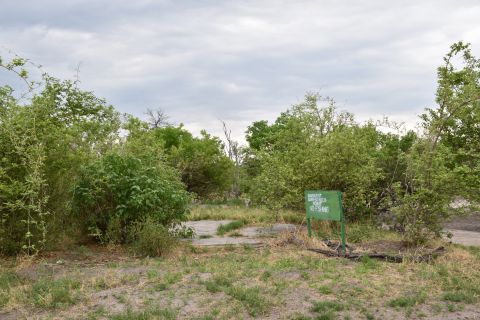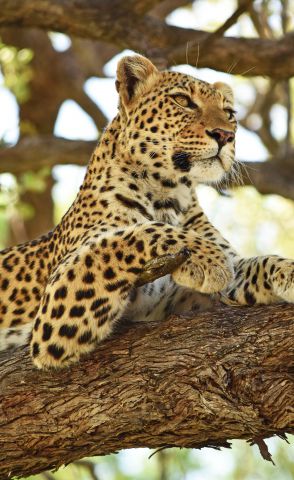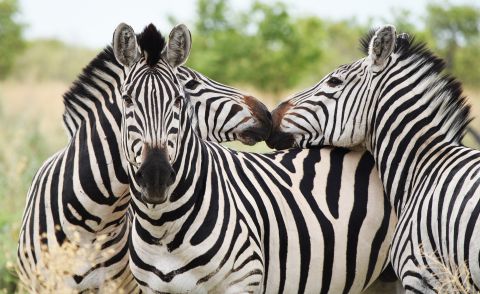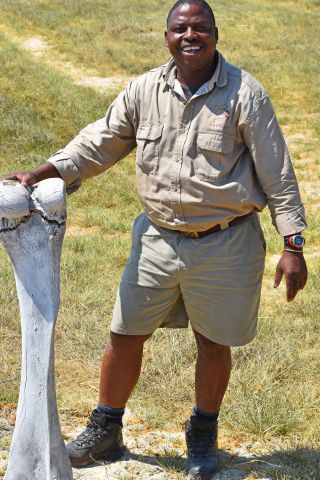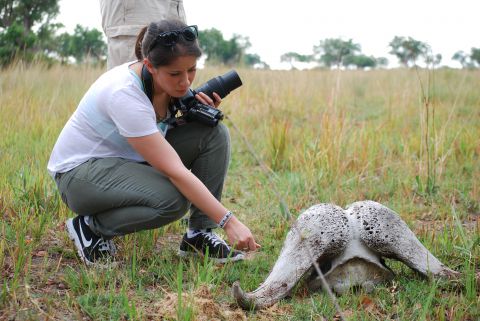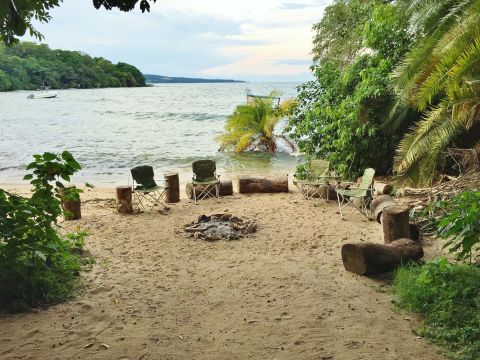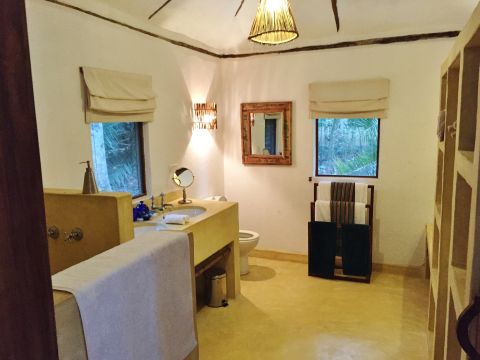Around the Next Corner & Other Tales
The Death of Ringo Starr
Posted 2016-07-27
Baby rhinos are some of the sweetest creatures on earth. Watching them interact with their caregivers is reminiscent of the way a puppy romps around with their boy, never far from their heels and nuzzling up against them as the slumber. Over months of dedicated care – baby rhinos need 24/7 companionship – the caregivers and their tiny wards develop a close bond. The young rhinos arrive at the Ol Pejeta Rhino Sanctuary traumatized and often injured after losing their mothers, normally to poaching. This would be a challenging situation in which to care for any little animal, but rhinos have an extra layer of difficulty on top of it. Despite decades of attempted husbandry, orphaned rhinos have a tragically high fail rate when raised in captivity. Humans simply cannot replicate the environment that they would experience in the wild with their mothers. An arsenal of techniques has been carefully crafted to assist in both the behavioral and physical development of a young rhino, but try as we might, we are simply not rhinos ourselves. If a rhino is to survive in the wild, its instincts must be honed, its human bonds – once delicately nurtured – must be broken, and its body must be physically ready for the challenges of wild living.
Enter, Ringo Starr. He arrived at the OPRS in October 2015 weak and severely malnourished after being abandoned by his mother due to illness. The keepers named him after the famous Beatles drummer, an important advocate against rhino poaching. After receiving intensive care from the OPRS staff, Ringo Starr slowly recovered from his rough start to life. This charismatic little rhino went on to steal the hearts of everyone he met with his energetic playfulness and sweet demeanor. He even helped raise the spirits of an older rhino named Sudan whose health had been flagging before Ringo’s arrival. Sadly, in early July Ringo’s health started to decline once again. After several weeks of ‘round the clock care and attention, little Ringo passed away on July 19th with his caregivers by his side. Just like many famous rockstars, his life burned short and bright. The loss was felt deeply not only by the OPRS staff, but also by the millions worldwide who had fallen in love with this playful little rhino.
Every calf counts in this battle against poaching. Conservationists have long debated whether it is better to conserve a whole ecosystem, thus extending benefits to all the inhabitants of a region, or to protect one key species and its habitat (such as rhino), thus creating a trickle-down conservation effect for the rest of the ecosystem. Unfortunately, with rhinos attracting so much unwanted attention from poachers, it is no longer about even conserving one species, it is down to protecting individuals. In the case of Ringo Starr, losing him represented so much more than simply losing another rhino. In his short life, Ringo made a big impression on the world. He was an ambassador for his kind – his adorable antics and sweet personality captured the hearts the millions, shedding light on the dark realities of illegal poaching in Africa.
Despite the notorious difficulty of raising orphaned rhino calves, it is so vitally important for the preservation of the species. With great challenge comes great reward. We applaud the efforts of all those who dedicate their lives to saving rhinos – both young and old, both captive and wild. It is a task that takes physical, mental, and above all else emotional stamina. Without their tireless efforts, the future of wild rhinos would be even more uncertain than it already is. If you would like to join the efforts, you can simply make a donation (links to suggested organizations below), or you can get in touch with us here at Mango Safaris to learn how you can get more involved by putting your tourism dollars to work for conservation.
Check out one of our rhino conservation trips.
Or make a donation to one of our preferred rhino conservation projects:
Botswana Rhino Relocation & Reintroduction Project
Lewa Conservancy: All Rights Reserved for Rhinos
Image courtesy of Ol Pejeta Conservancy. Photos of Ringo & his keeper by James Suter.
When I saw the Southern Cross for the first time…
Posted 2016-07-24
Two months ago I took a trip with my best friend. It was not planned. As some things go this was best. We went half way around the world and opened our eyes to a world we had only read about. I was not ready for what I saw.
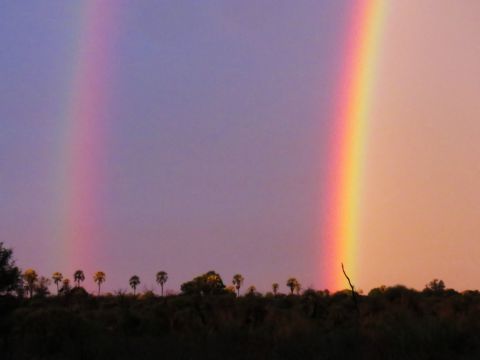
The Zoo came alive. No walls no cages no keepers. No doors on the trucks. No doors on the trucks… Somehow I was always facing the wild, boys on the right.
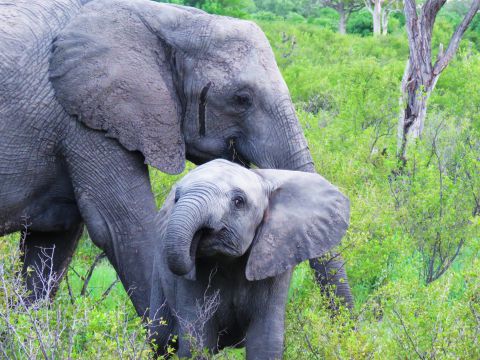
I had termites in my hair and in my mouth. The sound of the wildlife will resound in my ears forever. My excited fear of the lion walking beneath me will shake me awake forever. Forever. I will be lulled to sleep by the memory of the wind blowing off the Kalahari as I float in the pool. The shining outline of The Southern Cross is burned into my fading sleeping memory, my excited fear of sleeping under the giant sky still keeps me awake.
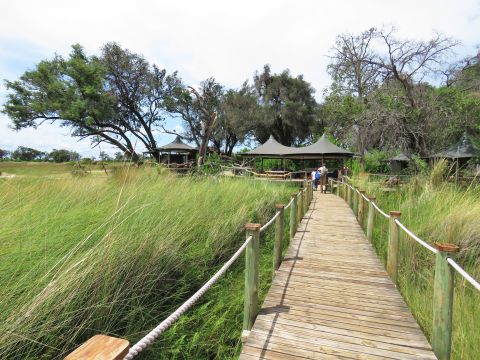
Zebra, elephant, giraffe, aardvark, baboon…too many to name.

I learned many things. Unemployment is as high as 85% in many countries. AIDS Is killing whole generations and giving rise to unimaginable atrocities. Africans are loving and happy people. Bugs do taste good.
I watched a world never imagined flow by in a quick three weeks. Our trip expertly planned by friends who took the guesswork out of our hands and allowed us to experience a new word free of worry. Placing us in a floating world of watery Papyrus, a mirage of dry lake hope and sea of floating hippos.
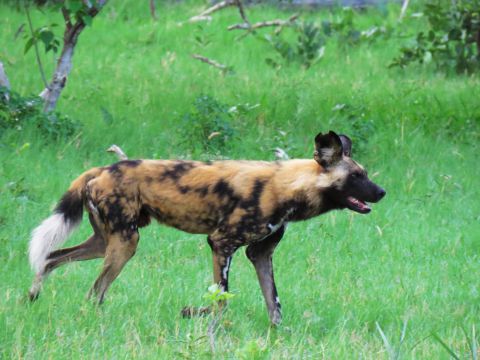
I had not wanted to go, I did not want to be hot and dusty...I did not know. Now that I am back I wish I was back…hot and dusty. I am in love with what I did not understand. As I go to sleep I am lulled by the soft Song of the Okavango whispering to me from across the miles.
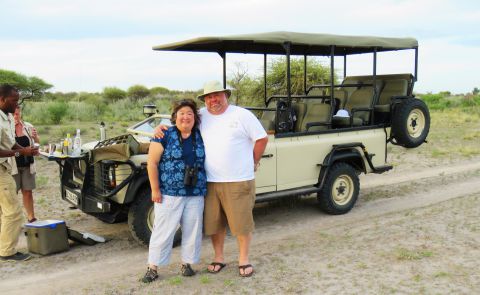
Guest post by Dave Kahoilua, newly branded safari enthusiast and husband to Kristie from the Mango Team.
All photos by Dave & Kristie.
Lions in the Mist
Posted 2016-07-17
I am not a morning person. At all. I have no idea how the safari industry became my calling - it all happens way too early. Your guide comes to your tent with a very friendly 5:30am wake up call. Ugh! That early on vacation? Why did I sit around the campfire having one more drink until 11:30pm last night? Why did I indulge in another chapter of my book? All of these things float through my sleepy mind from a warm bed that is clearly not ready for me to leave either. Alas, I rally as curiosity of what the morning might hold gets the better of me. Will it be a pride of lions feeding on the spoils of last night’s hunt? Or perhaps a rare glimpse of a porcupine as it scuttles back to its den?
After a mug (or two) of coffee and a bite to eat, we head out. It is May, and winter’s purchase is quietly taking hold in the Okavango Delta. The grass is tall and their dewy seed tassels shimmer in the early morning light. A mesmerizing layer of mist sprawls across the grasslands, creating a scene that resonates with something deep inside you.
I have been on safari a thousand and one times. But every morning is different, promising something new, something special. You never know what it will be, but it is always something. On this particular morning we were identifying some little birds when out of the mist appeared a family of lions. There is something about the way a lion walks that is unlike any other animal. There is a regal assuredness to it. A quiet strength that lets you know they think they’re king of the savannah as well. We watched enraptured as their powerful paws silently parted the grass, each breath condensing in the sunlight of a cold morning.
It is on mornings like these when you feel the power of Mother Nature and her subtle guiding grace. What a beautiful world we are lucky enough to live in. Sometimes it is important to just sit and observe, taking in all the things, big and small, that go on around you. As always with safari, it was completely worth getting up for.
Experience your own piece of Botswana magic.
Photos by Mango co-founder Teresa Sullivan.
From Fluffy to Regal: Hwange's Next Generation
Posted 2016-07-07
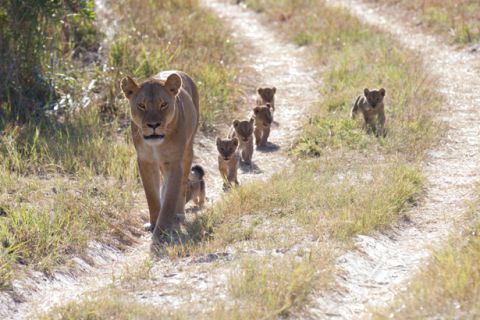
The lions of Hwange National Park have had a brutal couple of years. First they lost Bush, a strong but ill-tempered male to hunters. Then a female lioness was accidentally killed when a train hit her as it passed through the park. Then Cecil was illegally baited out of the national park’s safety before he too was hunted and killed. Strong prides have long-ruled Hwange’s lands, but now the prides of the eastern side are in shambles.
The region is ideal to support thriving populations of lion. Groves of ancient acacia trees and open pans filled with rich grasses provide the perfect habitat for abundant grazers. With the well-maintained waterholes providing life-sustaining water year round, both predator and prey have flourished.
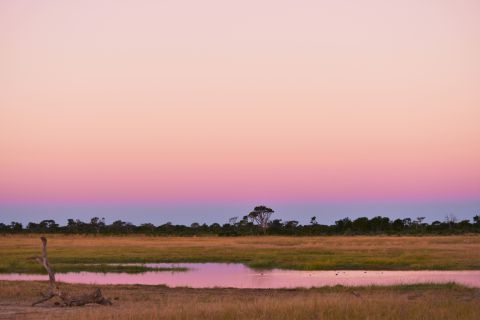
On my recent trip to Hwange, we were lucky enough to see Xanda, Cecil’s son. Since reaching adulthood, he has joined forces with three fragmented female lions to form the Backpans Pride. All three lionesses are now proud mamas to a collection of tiny, fluffy cubs. As we watched them scramble, paw, and romp about I was awe struck with the utter cuteness of nature. It was so sweet to watch Xanda babysitting his young cubs, patiently letting them crawl all over him and ‘hunt’ his tail while the ladies were out hunting the real prey.
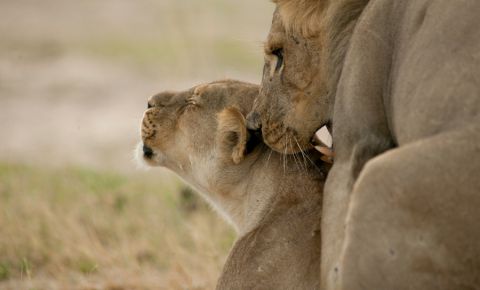
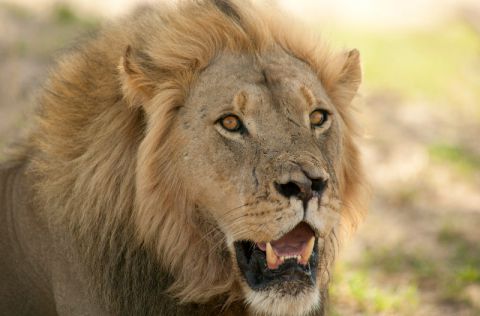
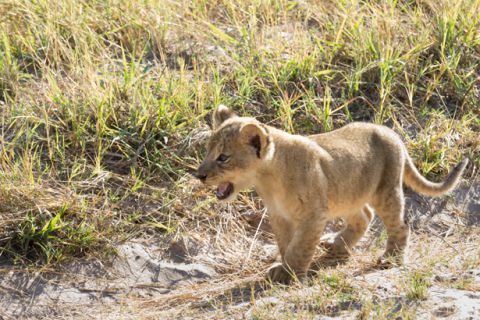
Eight baby lions.
They started as ten, but our guides report that they are strong and doing well. Winter is coming, so the snakes will hibernate, making the grasslands safer for little paws. Xanda is proving to be a good, protective father. If these cubs can make if through the next few months, they will be strong enough to travel and hunt with the pride. Right now, the guides are cautiously optimistic. Hopefully they will mature to be the next generation of lions for Hwange National Park. In the coming years we can watch as Hwange’s prides strengthen, laying claim to new territories, and having plenty more sweet little cubs.
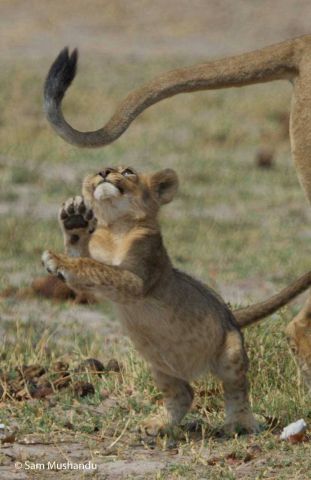
Beks Ndovlu, owner of nearby Somalisa Camp, attempted to purchase all of this year’s lion hunting permits for Hwange National Park but the Zimbabwe government decided to restrict this activity for now. In the future this could be a good way to further protect the lions while keeping the revenue brought in by selling hunting permits.
Check out some sweet footage of them playing!
Images from Wilderness Safaris, David Macdonald & Sam Mushandu
The Great Migration – Tanzania Update
Posted 2016-06-30
Last week as safari guides across the Serengeti woke up, they were greeted by a sight that is so deeply integral to the Serengeti experience that it connects with every fiber of their beings. Overnight thousands of wildebeest and zebra had crossed into Tanzania in their endless pursuit for better grazing. The Serengeti is a landscape of extremes – plains sweeping off to the horizon, grasses ten feet tall, thunder clouds towering to the heavens. But most iconic of all, the millions of ungulates that move as a heaving, snorting mass, devouring every blade of grass in their way.
As they pour into the Serengeti, they face one of their biggest challenges of the year: crossing the Mara River. Swirling currents and eager predators stand between them and their next meal – the grass is always greener on the other side after all. The herds pile up along the banks, waiting for hunger to overtake anxious fear as a single, brave creature wades into the river. This is the only nudge the rest need, starting a veritable stampede down the banks and into the muddy waters.
While these huge herds are impressive to see, the real thrills come from the abundant predators that are drawn to this walking buffet. Lions and cheetahs swarm across the plains, while toothy crocodiles patrol the riverbanks. With so many animals packed into such a small area, you are bound to see several impressive displays of predator-prey interactions.
How Mango Creates the Perfect Migration Trip
The saying goes “as regular as rain”, which ironically holds great unpredictability when it comes to the migration. The wildebeest exist in a set cycle - mating, migrating, and giving birth all together. Each of these events are associated with specific geographic regions of the Serengeti-Masai Mara ecosystem, but the timing is more flexible. Rainfall patterns are not always predictable, and as a result, neither is the annual migration. This presents quite the challenge for us in the safari industry. For instance, this year the wildebeest are moving into Tanzania a month earlier than we would expect based on historical patterns. Many of our clients want to see the migration, but how can we be sure they’ll see it when we’re booking trips up to a year and a half in advance? Mango has a sworn-by rule to bookend your trip with time dedicated to the migration so you catch them no matter where they are. You can never tell what is going to happen, but Mango has always got you covered!
Stuck in the Middle & Not With You
Posted 2016-06-27
I sit here in a middle seat at the back of an SAA flight from Victoria Falls to Johannesburg and curse their seating policy. They have gone the way of many airlines these days and started charging for seat assignments. This leaves SAA travelers and Mango clients with 3 options.
1. Wing it and see what happens at the airport. I tested this theory to see how things worked out on this recent trip and SAA reinforced that this is not a great plan. We arrived at the airport early but the only seats left were middle seats so not only was I in a middle seat but everyone in our group was spread over the plane in middle seats. These flights are only 2 hours so this is not the end of the world but it is certainly annoying. Mango strives not to have ‘annoying’ be part of the way you describe any of our experiences and this is challenging given the remote areas of Africa that we operate in.
2. At 24 hours before departure you can check in on line and get your seat assignment. This might work ok for local travelers who are coming from their home and have a computer but this poses a real challenge to an international traveler. Your time as a traveler should be spent having dinner, shopping and exploring the city, whether Johannesburg or Cape Town, rather than dedicating valuable time looking for a business center at the perfect time to get your seat assignment. This is not happening and unrealistic.
3. Sadly, the two above options are poor enough that it is our recommendation that our guests surrender to the rules and buy your seat assignments at the time of ticketing.
After suffering through these options, we have landed on a new policy in an attempt to keep our level of service where it should be. Mango will automatically purchase your seat assignments on regional African flights when we issue tickets for our clients. The cost of each segment can range from $12-25 per person per flight. This cost is not part of the flight quote that we have given you. This is an additional charge.
PLEASE NOTE: We will automatically purchase your seats for you on the same credit card you use to ticket the flights with unless we are instructed by you otherwise.
Thank you for your understanding and you are welcome.
Three Cheers for the Termites
Posted 2016-03-22
It's International Termite Week!
Today marks the start of International Termite Week. Why is there a whole week to honor these creepy crawlies, you ask? Because they are the glue that holds many African ecosystems together. They have the proud titles of being both ecosystem engineers and keystone species – but what do those mean?
An ecosystem engineer is a species who shapes their environment (like a beaver building a dam), and whose changes are disproportionately important relative to how many of them live in the habitat (one beaver’s dam impacts the entire downstream ecosystem). On the other hand, a keystone species is one that's essential to the wellbeing of the ecosystem. This means, every other species in the ecosystem is directly or indirectly dependent on the keystone species, such as a sea otter in a kelp forest.
Little Creatures, Big Impacts
Termites build mounds with sky high towers and extraordinarily complex subterranean tunnels and chambers. For small insects, their impacts are far-reaching and diverse, creating fetile islands of productivity. Their constant tunneling and excavating brings nutrients, air and water into the depths of the soil, which helps trees and other plants to grow better. Termites have their own ‘gardens’ where they grow fungus deep underground for food. This helps to distribute nutrients throughout the soil, acting as subterranean fertilizer.

Hungry herbivores are drawn to graze on the lush plant life found around termite mounds. As they feed, their manure acts as additional fertilizer, further boosting the productivity of the area. The abundant herbivores in turn attract predators, giving them excellent hunting grounds. Who would have thought that such tiny insects would help dictate the distribution of so many other animals?
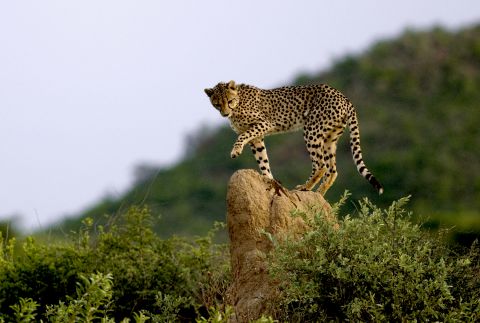
Without termites, the harsh dry season would be even harder for many plants and animals to survive. Termite mounds are an architectural marvel. They’re constructed to pull air and moisture through the tunnels, from the top to the deepest chambers. Throughout the year, they maintain an incredibly consistent climate in the mound. This means they are able to survive the driest times, and continually provide their benefits to other plants and animals. Without termites, many African ecosystems wouldn’t be able to thrive year round.
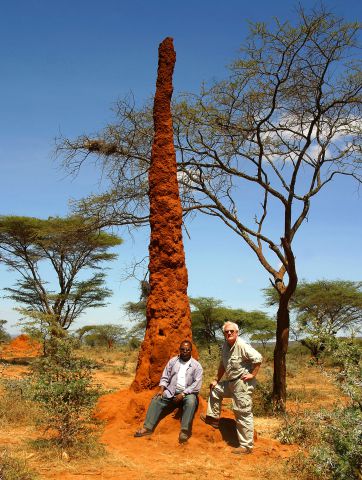
Next time you’re on safari, take a moment to appreciate these fascinating structures and the diligent little workers that live within. Safaris wouldn’t exist without the incredible African wilderness, so we should give a big thank you the termites that make it all possible.
A Biologist in the Bush: Part Two
Posted 2016-03-10
First Light
If there’s one thing that will always hold true for me, it’s that I am not a morning person. Waking up is an arduous task for me, even on the best of days. When I told my friends that I would be getting up before dawn while on safari, they all laughed and told me there was no way that would happen. Surprisingly, the early mornings ended up being my favorite time of day. Days on safari have this pleasing rhythm. You wake up just as a deep blue glow is softening the horizon. After a few yoga stretches I would head down to the main lodge for a light breakfast of fresh fruit, yogurt and a cup of coffee (or maybe two or three – I’m only human). Just as the sky was fading to a pale blue, we would head out for our morning game drive, thermos. That soft light was what made those early mornings so worth it. It has a luminous quality that fills the whole mopane forest with a golden warmth. It softens the harsh edges of the arid landscape, making it feel enchanted, otherworldly.
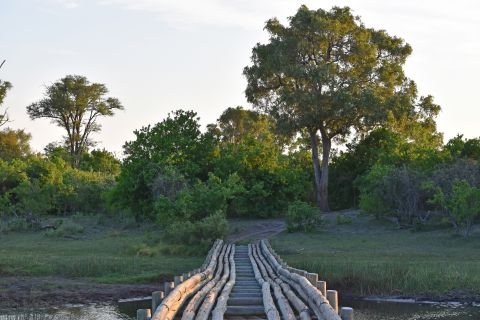
The animals are just emerging from their slumbers, carefully picking their way through the tender new leaves and grass shoots. Fresh tracks from the night’s activities reveal the hidden dramas that unfold under the veil of darkness. Like reading a morning newspaper, the guides will study the crisp prints and unbroken trails, telling you the story of who has come and gone in the night. Even though they may be long gone, it’s always thrilling when they point out the telltale marks of a leopard. “She may still be nearby,” they’ll say. “We’ll just have to wait and see what magic the day holds for us.”
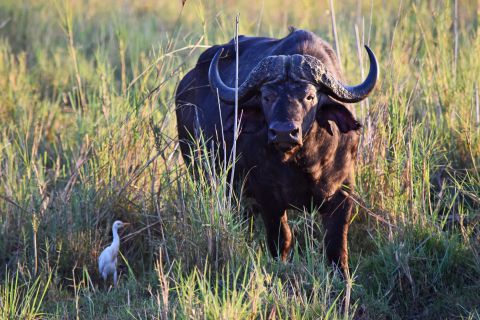
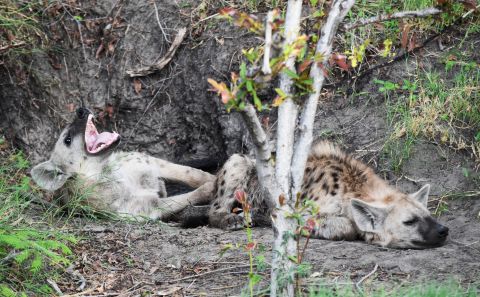
A Biologist in the Bush: Part One
Posted 2016-01-07
Botswana, Through and Through
So often nowadays a destination doesn’t live up to your expectations. The landscapes are lacking that touch of professional photoshopping, hordes of tourists clog the must-see sites, and the much-touted cuisine is overpriced. When, like me, you’ve worked in the travel industry for a while and have seen thousands upon thousands of the best marketing photographs, the pressure is even greater on the destination to perform. Let me just say that Africa did not disappoint in the slightest – in fact, it far exceeded them in every way. You can look at a million pictures, but nothing will ever capture the magic of sipping on a G&T awash in the coral glow of the sunset, or falling asleep to the sound of hyena and lion calls, or seeing the Milky Way stretching from horizon to horizon. Pure magic.

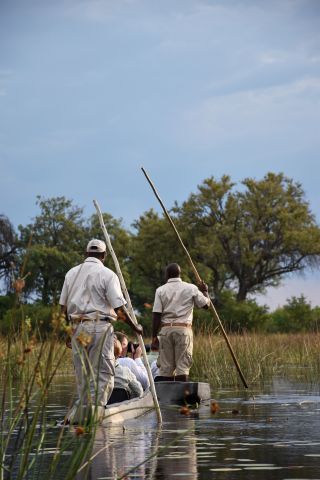
The beauty of Botswana is its purity of character. By never having been colonized, they managed to maintain a cultural identity that is wholly and authentically BaTswana. The nation’s existence is indelibly linked to their natural world – diamonds and ecotourism bolster them financially and their daily lives ebb and flow with the seasonal floods of the Okavango Delta. Botswana is coming up on 50 years of full independence (they were a British protectorate before) and the sense of pride is palpable among its people. While in the Savuti region, I had the honor of visiting the ‘President’s Campsite’, which is the exact site where in 1966, the first president, Seretse Khama, made the decision to protect Botswana’s vast wilderness. It’s inspiring to see how the good foresight of one man can so profoundly affect the future of an entire nation. President Khama laid the groundwork not only for a sustainably run, conservation-minded country, but also for the political stability afforded when corruption and exploitation are eliminated. We sipped on our morning coffee and listened to our guides Metal, a Savute native, and Walter speak about the importance of this campground. “The decisions made to conserve in the 1960s were made right here. The blueprint for Botswana’s ecotourism policy was written here. And I wanted to bring you here today so you can feel this place and understand why we have the tourism industry that we have today,” said Walter as he stood in the center of the clearing. Honor and respect for nature run deep in the BaTswana people.
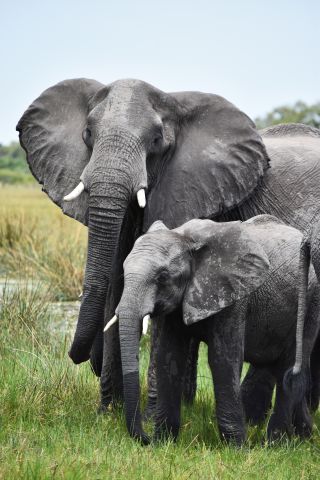
The Setswana name ‘Savuti’ means unpredictable and mysterious – something that you cannot explain. When you’re out on safari there, you feel that power. It’s that beautiful sense of place that envelops all your senses and makes you forget the rest of the world exists. “I love this place – it’s my home,” Metal told us. There is no other way to explain the BaTswana people than humbly prideful. Despite being contrary, there is simply no other way to describe the immense pride and humble spirit shared by the BaTswana people. They have every reason to be incredibly proud of being from Botswana, yet they are so gracious and flattered whenever a visitor expresses admiration.

I was humbled by my time in Africa. Very rarely do you find a place so enthralling that you are constantly of a state of awe. It takes a very special place to render both first time and veteran travelers speechless. The nature of a wildlife-based trip is that you never know what to expect. Every game drive offers a new encounter, a new landscape, a new experience. Africa is never the same place twice. Perhaps that what makes the BaTswana people such a treasured part of the experience. They live their cultural heritage, embrace tradition in their daily lives, and yet strive forward with unfaltering dedication to their flourishing future. Botswana is a destination that no traveler should miss out on. I know that I am much the richer from my time there.

Check out our Higlights of Southern Africa to see how you can explore beautiful Botswana yourself.
Brian Takes Tanzania: Part Four
Posted 2015-01-26
Rubondo Island Camp, Tanzania
Rubondo Island is a large island on Lake Victoria in western Tanzania. It has been a national park for many years, but until recently has been left undisturbed. Now it is billed as a Lake Victoria fishing paradise, haven for chimpanzees, elephants, 300+ birds species, and even bizarrely as it sounds…a few giraffes. The fishing was non-existent, the chimps are not habituated, the elephants and giraffes not to been seen. The camp is nice enough but I’m giving this location a ‘stay tuned’ – great things could be coming together on Rubondo but it hasn’t quite hit its stride yet in our opinion.
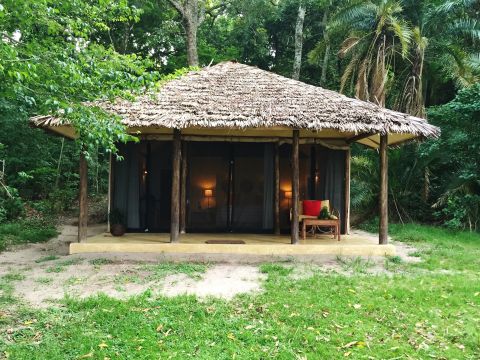


Explore by date








